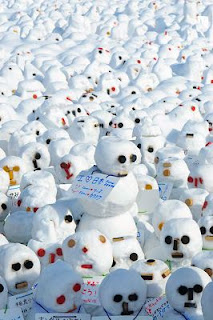These two jam-packed days of photography are for those of you who want to improve the images you take on holidays. Film is gone and digital is in. How well do you know your digital camera? How has it changed your travel photography?
We'll start off talking a bit about the technical things. Apertures, shutter speeds, ISO. What focal length lens do I need for this effect? What's the difference between the telephoto and the wide-angle? What's this white balance thing? Do I need a tripod? How do I carry all this stuff? What filters do I need?
Then when we have a handle on the technical things we'll move on to the artistic side of the equation. How do I capture that great sunset? Compose the winning shot? Approach people to take their portraits? Photograph the right subject at the right time of day? Master available light? Use my flash?
I run the courses with only a small number of participants. This means that we have an intimate group and people can ask as many questions as they want. The aim is to have every one of you leave having learnt what you wanted to find out. There is a full set of course notes covering everything so you can go back at a later date to refresh your memory and I am always available for questions after the course has finished for those with ongoing questions.
Think of it like your own personal photography book - only one that talks back and answers your questions!
The course will run for two full days over the weekend of the 27th and 28th June. Then a couple of weeks later we'll all get together again at a cafe in town and show our photographs and what we learnt. Places are strictly limited to the first 20 people who book and the cost for the weekend is $190 (including GST)
For those of you who don't know me, a little bit about myself. I'm a professional travel photographer with 10 years in the industry. I am a contracted photographer for Lonely Planet Images and have been featured in more than 45 of their guidebooks ranging from Tokyo to Nepal, from Southern Africa to Australia and pretty much everywhere else in between. My images have been published in magazines, newspapers and books all around the world including magazines such as National Geographic Traveler, TIME, Vacations & Travel and Backpacker Essentials.
Some former students have kindly written their impressions of the course and given me permission to post them here:
"Paul Dymond is an excellent photography teacher. As a participant at a number of his courses I would happily recommend him to anyone wishing to learn more about how to take better pictures. He is an amazing photographer and his skill as a teacher and love of photography combined with his professional experience ensures everyone comes away with new tips, techniques, ideas and inspiration."
Peace Mitchell
Exhibition coordinator - Cassowary Coast Camera Club
Peace Mitchell
Exhibition coordinator - Cassowary Coast Camera Club
We have enjoyed every one of your courses and would be very happy to repeat them all! Some of us are slow learners! The courses have been informative, very encouraging and a lot of fun, and have inspired us to get out and about with our cameras and take pictures of things we might not have previously considered. And of course, we have since upgraded our cameras and lenses!
Peter and Janet Smith
So if you're keen on coming along please let me know ASAP at info (at) dymond dot com dot au. Or if you know somebody who might be interested please pass this along.
cheers
Paul


